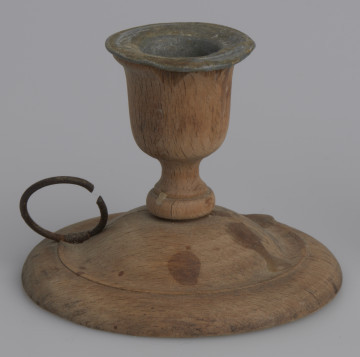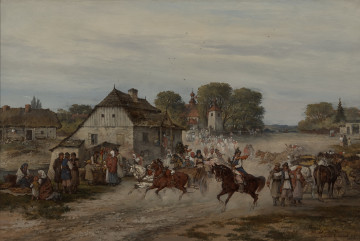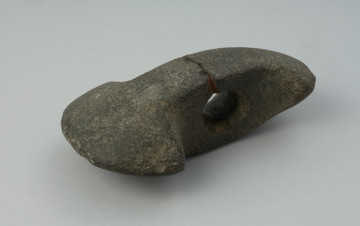
Lighting devices
1939 — 1941
Museum of the history of Polish Jews
Memorabilia of a ten- to twelve-year-old boy named Herszla (Herszel, Heśla, Herszek; we do not know the surname), donated to the Museum collection in 2017 by Krzysztof Magiera. According to the account given upon the donation of the objects (a steelyard balance, a wooden oil lamp, and later also a photograph of the donor’s house and his father Franciszek Magiera, as well as a technical drawing of the balance made by the donor), Herszla stayed periodically (three times?) in the Magiera family house in the village of Oględów in the early 1940s, or more precisely, during the period of the existence of the ghetto in Staszów. It can be assumed that Herszla, having returned to the ghetto for the last time, was deported – or killed during an escape attempt – in November 1942, when the Germans carried out the main liquidation action in the Staszów ghetto. The transports were directed to the extermination camp in Bełżec.
From the testimony of the donor (an edited version of the interview, published under the title “Kaganek” in the magazine Midrasz, 2016, no. 6, pp. 67–69):
“[…] he lived in our house, in Oględów, it was so agreed by our fathers. […] Our fathers knew each other well, because they had traded cows and calves together before the war. […] When he first came to with us, he was soon taken away by his brother, who probably worked in the ghetto police. And then he escaped from there a second time, and his brother came to get him a second time after six months or so. He said: ‘They’re going to kill dad, they’re going to kill mum, come on, Herszel, come back home.’ So Herszek went with him, with the older brother. But later he came to us again, he had run away from the ghetto. He was so scared. And when the brother came for him a third time, he never came back. Later, in 1942, a pacification operation was carried out in Staszów, and those who weren’t killed on the spot in the ghetto were driven on foot to Niziny, to Stopnica, and to Szczucin, where they were loaded on a train. There was a broad-gauge railway line there. A narrow-gauge railway connected Szczucin with Staszów, but the Germans didn't use it and instead drove all the Jews on foot. Any elderly person who collapsed was killed. […] My father, Franciszek, […] [w]as going somewhere and saw that."

19th (?) century
Castle Museum in Łańcut

1933 — 1937
National Museum in Szczecin

National Museum in Szczecin
DISCOVER this TOPIC
Museum of King Jan III's Palace at Wilanów
DISCOVER this PATH
Educational path